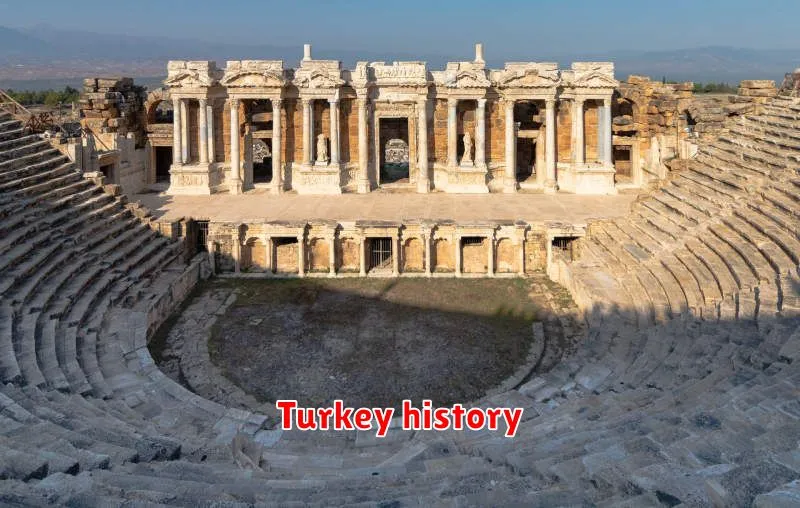Turkey, a land steeped in ancient history and cultural richness, boasts a treasure trove of historical sites that will leave you breathless. From the majestic ruins of Ephesus to the mystical landscapes of Cappadocia, this captivating country offers an unparalleled journey through time. Prepare to be amazed by our curated list of the 10 Must-See Historical Sites in Turkey – a definitive guide for any history buff or adventurous traveler seeking an unforgettable experience exploring iconic landmarks and hidden gems. Get ready to discover the wonders of Ottoman architecture, Roman ruins, and much more!
Hagia Sophia

A visit to Turkey isn’t complete without experiencing the Hagia Sophia, a breathtaking architectural marvel in Istanbul. Originally built as a Byzantine cathedral in the 6th century, it later served as a mosque and now stands as a museum, showcasing a remarkable blend of architectural styles.
The sheer scale and grandeur of the building are awe-inspiring. Its massive dome, intricate mosaics, and towering minarets are testaments to centuries of history and cultural fusion. Wander through its vast interior, marvel at the surviving Byzantine mosaics depicting biblical scenes, and feel the weight of history within its ancient walls.
Exploring the Hagia Sophia offers a unique journey through time, revealing the layers of civilizations that have shaped Istanbul. It’s a place where the echoes of Byzantine chants mingle with the memories of Ottoman prayers, creating a truly unforgettable experience. Don’t miss the opportunity to witness this incredible testament to human ingenuity and cultural exchange.
Ephesus
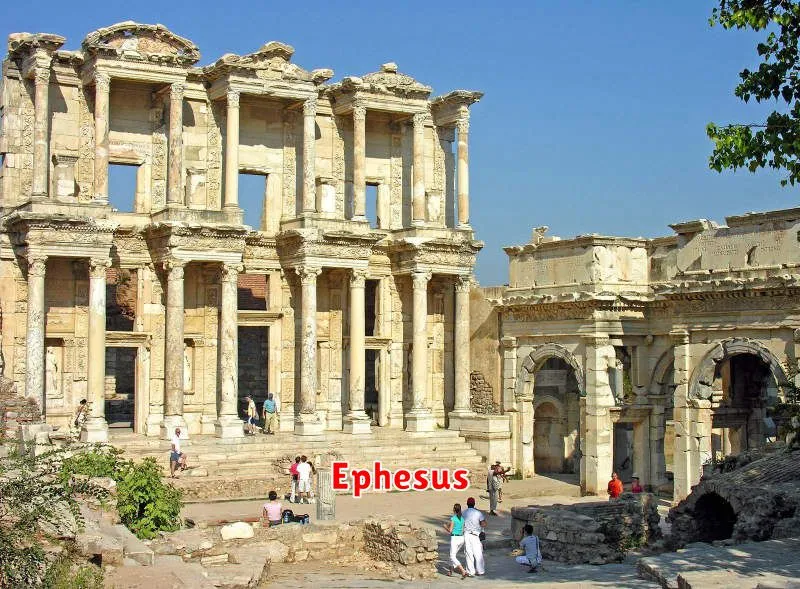
Ephesus, located on Turkey’s Aegean coast, is one of the best-preserved ancient cities in the world. A significant site in Roman times, its remarkably intact ruins offer a captivating glimpse into the past.
Explore the Library of Celsus, a stunning example of Roman architecture, its façade still largely intact. Wander through the Great Theatre, capable of holding 25,000 spectators, imagining the grandeur of past performances. The Temple of Artemis, one of the Seven Wonders of the Ancient World, is represented by a single surviving column, a testament to its former glory.
You’ll also find the Curetes Street, a remarkably well-preserved marble street lined with impressive structures. Walking through Ephesus allows you to experience the scale and sophistication of this once-thriving city, a must-see for any history enthusiast visiting Turkey.
Topkapi Palace
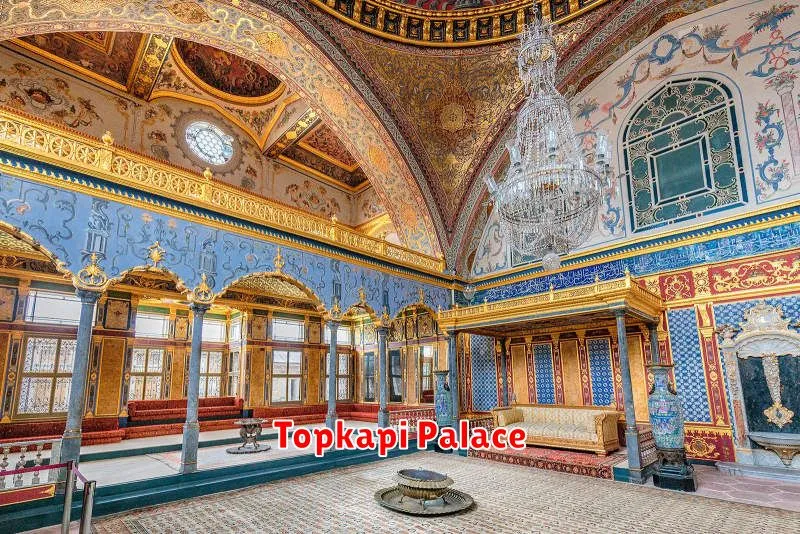
Topkapi Palace, located in Istanbul, is a must-see for any history buff visiting Turkey. For centuries, it served as the main residence and administrative headquarters of the Ottoman Sultans.
This sprawling complex boasts stunning architecture, including opulent courtyards, harem sections, and impressive museums showcasing a vast collection of Ottoman artifacts. You’ll find treasures like ornate weaponry, dazzling jewels, and exquisite calligraphy.
Exploring Topkapi Palace offers a fascinating glimpse into the rich history and culture of the Ottoman Empire. Allow ample time to wander its grounds and soak in the grandeur of this significant historical site. Remember to check the opening hours and consider booking tickets in advance, especially during peak season.
Gallipoli Peninsula
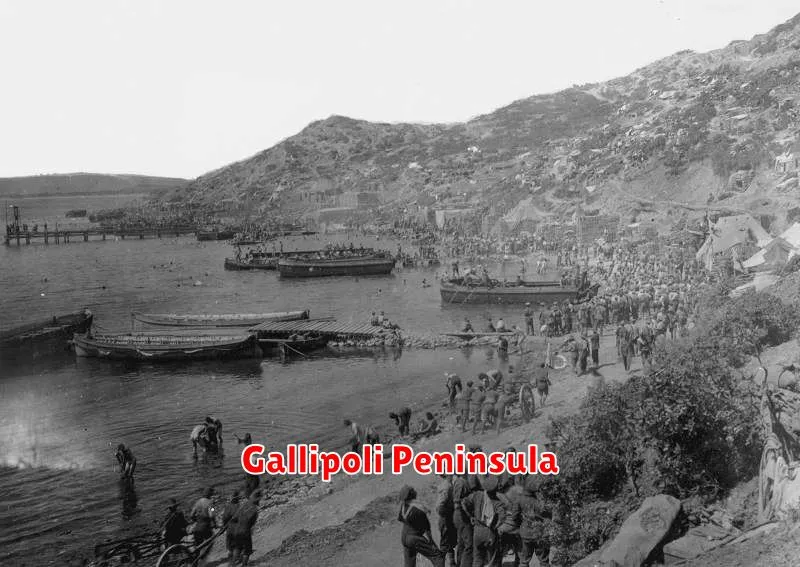
The Gallipoli Peninsula, a historical site located in northwestern Turkey, is a must-see for any visitor interested in World War I history. This dramatic landscape witnessed the devastating Gallipoli Campaign of 1915, a pivotal battle between the Allied forces and the Ottoman Empire.
Key sites include Anzac Cove, where Australian and New Zealand Army Corps landed, and Chunuk Bair, the scene of fierce fighting. Visiting the peninsula offers a poignant journey through the trenches, cemeteries, and memorials that commemorate the immense sacrifice made during the campaign. You’ll find numerous museums and interpretive centers detailing the battle’s events and the experiences of the soldiers involved.
The rugged beauty of the peninsula itself contrasts starkly with the historical significance of the site. The beaches, cliffs, and rolling hills provide a contemplative backdrop for reflection on the events that unfolded there. Walking through these battlefields offers a powerful and unforgettable experience, a sobering reminder of the human cost of war.
While exploring the Gallipoli Peninsula, be sure to allow ample time to fully appreciate the historical context and the sheer scale of the events. It’s a place where history comes alive, leaving a lasting impression on all who visit.
Sumela Monastery

Nestled high in the Altinöz Valley of the Black Sea region, Sumela Monastery is a breathtaking testament to Byzantine architecture and history. Perched dramatically on a cliffside, its stunning location alone makes it a must-see.
Founded in the 4th century, according to legend, by two monks, the monastery boasts a rich and complex history. Over centuries, it served as a significant religious and cultural center, accumulating numerous frescoes, chapels, and living quarters. Its intricate rock-cut architecture, seamlessly integrated into the cliff face, is truly remarkable.
While much of its original structure has been damaged by time and natural disasters, the monastery’s restored sections still offer a captivating glimpse into the past. Exploring its chambers, admiring the surviving frescoes, and taking in the panoramic views from its lofty position offers a uniquely unforgettable experience for any visitor to Turkey.
Visiting Sumela Monastery isn’t just about seeing a historical site; it’s about experiencing a piece of living history in a truly awe-inspiring setting. Don’t miss this opportunity to witness the incredible legacy of this remarkable place.
Troy Archaeological Site
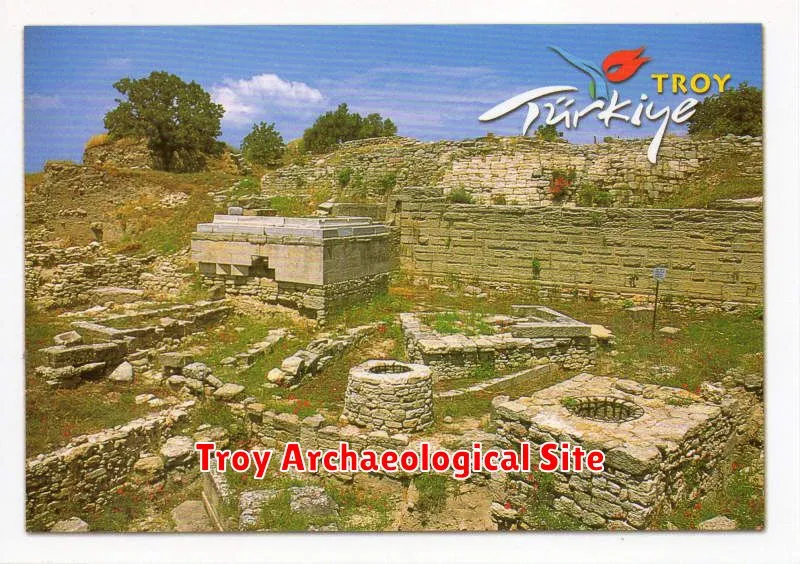
Nestled on the northwestern coast of Turkey, the Troy Archaeological Site is a place steeped in legend and history. This isn’t just any historical site; it’s the legendary Troy, home to the Trojan War immortalized in Homer’s Iliad.
Excavations have revealed the layered remains of nine ancient cities, built one atop the other over millennia. Each layer tells a different chapter in Troy’s fascinating story, showcasing the evolution of architecture, culture, and societal structures.
Visitors can explore the magnificently preserved walls, delve into the remains of ancient houses and temples, and marvel at the artifacts unearthed, offering a captivating glimpse into the lives of those who once inhabited this iconic location. A visit to Troy is a journey through time, a tangible connection to one of history’s most enduring legends.
The site’s significance extends beyond its literary fame; it’s a testament to the enduring power of human civilization and the continuous cycle of rise and fall throughout history. Don’t miss the chance to explore this UNESCO World Heritage Site and witness the compelling history of Troy firsthand.
Istanbul’s Basilica Cistern
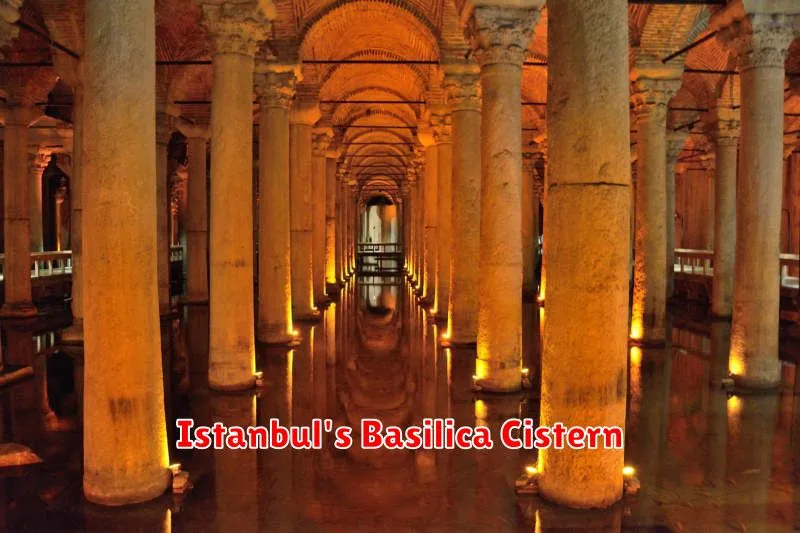
Delve into the mysterious depths of Istanbul’s Basilica Cistern, a breathtaking underground marvel. Built in the 6th century during the Byzantine Empire, this colossal, subterranean reservoir once held millions of gallons of water, supplying the city’s grand palaces and public buildings.
Descend into the dimly lit chambers, where rows of ancient columns rise from the water, their reflections creating an ethereal atmosphere. The iconic Medusa heads, repurposed as column bases, add an element of intrigue and mystery. The cistern’s sheer scale and the play of light and shadow create a truly unforgettable experience. It’s more than just a historical site; it’s a journey into a hidden world, a testament to the architectural ingenuity of the Byzantine era.
Exploring the Basilica Cistern offers a unique perspective on Istanbul’s rich history. You’ll not only witness a remarkable feat of engineering but also gain insight into the daily lives of those who lived in this magnificent city centuries ago. Don’t miss this captivating journey beneath the streets of Istanbul!
Ankara’s Ataturk Mausoleum
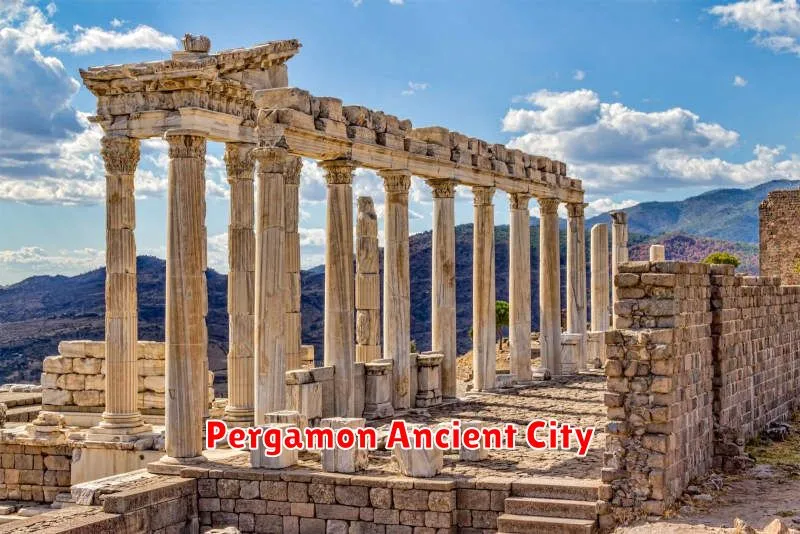
The Anıtkabir, or Atatürk Mausoleum, in Ankara is a must-see for any visitor to Turkey. This imposing monument is the final resting place of Mustafa Kemal Atatürk, the founder and first president of the Republic of Turkey.
More than just a tomb, Anıtkabir is a grand architectural complex, showcasing impressive examples of Turkish design and engineering. The sheer scale of the structure is breathtaking, and the surrounding landscape is meticulously maintained, providing a serene and reflective atmosphere.
Inside, visitors can explore the museum dedicated to Atatürk’s life and legacy, offering insights into his pivotal role in shaping modern Turkey. The mausoleum itself is a testament to the respect and admiration held for Atatürk, a figure who continues to inspire debate and discussion in Turkey today.
Visiting Anıtkabir allows you to appreciate the monumental scale of Turkish ambition and to connect with a crucial period in the nation’s history. Plan for ample time to fully experience this significant site.
Pergamon Ancient City
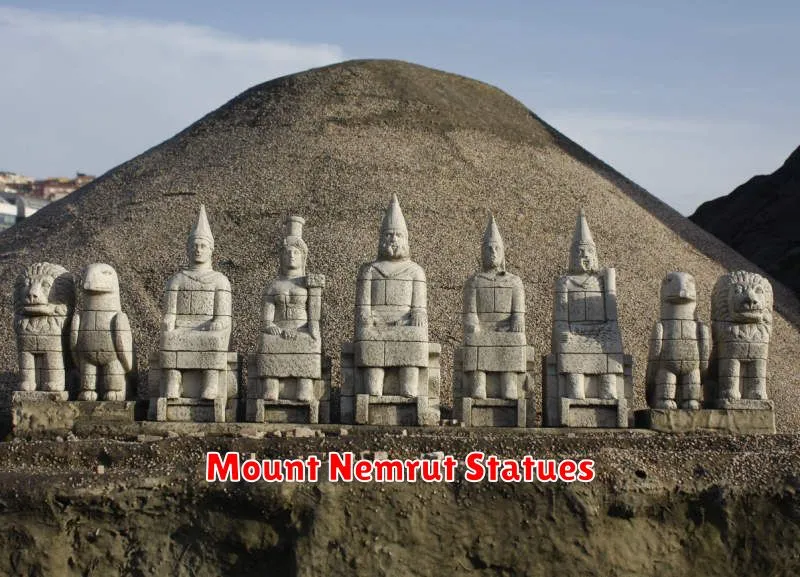
Pergamon, a UNESCO World Heritage site, is one of Turkey’s most impressive ancient cities. Located in modern-day Bergama, its dramatic setting on a steep hillside offers breathtaking views.
This once-mighty city boasts incredibly well-preserved ruins, showcasing its significant history. Explore the remnants of its magnificent Acropolis, including the Temple of Trajan and the impressive Great Altar of Zeus, a massive structure dedicated to the king of the gods.
Pergamon was also renowned for its Library of Pergamon, considered a rival to Alexandria’s. While the library itself is gone, the sheer scale of the city’s intellectual and cultural achievements is palpable.
Beyond the Acropolis, you’ll find the remains of a theater, a stadium, and other significant structures that paint a vivid picture of daily life in ancient Pergamon. The sheer size and complexity of the ruins are awe-inspiring, offering a fascinating glimpse into the past.
A visit to Pergamon is a must for any history enthusiast exploring Turkey. The sheer scale of the ruins and the dramatic setting make it an unforgettable experience. Remember to wear comfortable shoes as you’ll be doing a lot of walking on uneven terrain!
Mount Nemrut Statues
Mount Nemrut, located in southeastern Turkey, is a UNESCO World Heritage site famous for its colossal statues. These monumental figures, depicting Antiochus I Theos and various gods, were erected atop the mountain by the Commagene Kingdom in the 1st century BC.
The statues, significantly damaged by time and earthquakes, are a testament to the region’s rich history. Visitors can witness the giant heads scattered across the mountain summit, a truly awe-inspiring sight. The experience of exploring this ancient site at sunrise or sunset, with the statues silhouetted against the sky, is particularly memorable.
Reaching the summit requires a climb, offering stunning views of the surrounding landscape. While challenging, the reward of seeing the enigmatic statues and soaking in the breathtaking panorama makes the effort worthwhile. Remember to plan your visit carefully, considering the altitude and potential weather conditions.
Mount Nemrut offers a unique and unforgettable journey into the past. Its imposing statues are a must-see for anyone interested in history, archaeology, or simply breathtaking views.

